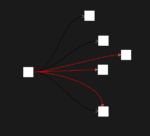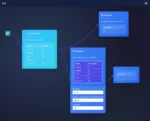
by tyler garrett | May 21, 2025 | Data Processing
Imagine rolling out your latest data pipeline update directly into production without breaking a sweat. Sounds risky? Not if you’re embracing canary deployments—the strategic practice tech giants like Netflix and Google trust to safely test in real-world conditions. Canary deployments let your team verify quality and performance of data workflows incrementally, allowing you to confidently push updates without missing insight or causing downtime. As experts deeply entrenched in data engineering and analytics, we understand how mission-critical pipeline reliability is—but innovation requires taking calculated, informed risks. Let’s explore how canary deployments unlock production testing potential, enabling teams to manage technical complexity led by smarter risk-taking and pragmatic strategy.
What are Canary Deployments in Data Pipelines?
Canary deployments are controlled rollouts where a small fraction of users or workloads initially receive an updated system. Rather than launching changes to your entire user population at once, this approach gradually introduces updates, letting your technical teams monitor how the enhanced functionality behaves in real-world scenarios. For data pipelines—often complex and tightly woven into core analytic processes—adopting canary deployments lets teams confidently test changes and innovations while mitigating risk and quickly learning what improvements are really effective.
In practical terms, a portion of jobs, workflows, or events pass through the updated data pipeline infrastructure first—in essence, becoming the early “canary” who tests the waters before full rollout. By closely observing how these early cases perform, teams quickly discover unforeseen problems without compromising their entire system. Leveraging this incremental launching technique allows informed and confident decision-making.
For organizations seeking a robust method of improving data engineering practices, implementing canary deployments offers tangible benefits across reliability, innovation speed, and responsiveness. Our expertise in core data engineering consulting services illustrates repeatedly how strategic canary deployments have allowed clients to unlock productivity gains and foster a safer testing environment directly in production.
Why Implement Canary Deployments?
Reducing risk and downtime
Risk reduction is one of the primary drivers behind canary deployments. Deployments at scale always carry potential risks like bugs, latency issues, or problematic data transformations becoming live—and any downtime equates to lost dollars, reputational harm, and wasted resources. Canary rollouts significantly lessen this risk by limiting exposure to changes until thoroughly tested under live scenarios. Teams gain valuable visibility without placing their entire pipeline architecture at stake.
Meaningful measurement and observability
Canary deployments align perfectly with a proactive observability strategy. Because only a portion of the system is running the updated code, targeted monitoring during canary testing phase helps identify performance bottlenecks and potential issues. For better clarity on crucial measurements, integrating sound observability into your pipeline workflows is foundational. Dive deeper into defining and monitoring essential performance metrics through our guide on the Golden signals for data pipelines.
Faster innovation cycles
The strategic agility enabled by canary deployments accelerates your innovation. With confidence in safe deployment techniques, developers iterate quickly knowing that any faults will remain isolated and manageable. This approach seamlessly integrates into existing Continuous Integration and Continuous Delivery workflows. Implementing canary deployments complements robust DevOps practices; we recommend our comprehensive guide on CI/CD pipeline building to learn more about establishing modern deployment standards.
Implementing Canary Deployments for Data Pipelines
Designing your workload partition strategy
Determining your initial canary workloads is critical. Start small with clearly defined boundaries, selecting data jobs or pipelines representing a proportionate, representative traffic sample. Taxes on pipeline resources, unique workload characteristics, and key functional usages should shape your chosen canary test group. For example, a financial analytics pipeline might initially choose one type of transaction or one regional dataset for their canary deployment.
Robust execution and automation
Automation is your ally when launching canary deployments. Automation standardizes testing processes, reduces risk further, and lets your team quickly replicate and scale successful deployments systematically. Modern data engineering solutions frequently leverage automation tools such as Apache Airflow workflows. Pipeline automation integrates seamlessly with database operations; to optimize your data grouping and aggregation strategies implemented during canary testing, explore our insightful guide on grouping and aggregating data in SQL.
Real-time feedback loops and observability
Observability ensures you capture early and distinct feedback from pipeline changes. During canary deployments, make sure your observability dashboards measure both the canary system and original production system simultaneously. Integrating enhanced metadata tracking can also provide crucial context about affected pipeline components. For Tableau Server environments, consider improving metadata collection methods in your pipeline performance analysis according to our guide on how to improve Tableau Server metadata collection with Colibri dashboards.
Addressing Challenges and Best Practices
As with any technological approach, successful canary deployments depend on careful planning and adherence to best practices. Potential challenges include ensuring adequate testing environments, designing representative experiments, and effectively managing increased complexity. Effective planning—considering factors such as data regulations, sensitive information handling, and timeline controls—mitigates these challenges dramatically.
Human-centered design significantly plays a role in overcoming organizational and technical challenges. Analyzing user experience and stakeholder expectations at the ecosystem level can prevent issues resulting from misunderstood or poorly adopted processes. Explore the benefits of adopting a human-centered design in data analytics to foster acceptance, understanding, and product adoption as your pipeline changes evolve in productive synergy with users.
Additionally, properly managed database environments underpin successful pipeline deployments. Setting up and maintaining the foundation of your database infrastructure is fundamental; you’ll find useful recommendations in our step-by-step guide on how to start MySQL locally to effectively support your team’s early pipeline development and testing phases.
Visualizing Canary Deployment Outcomes
An essential component of successful canary deployment strategies includes translating data into effective, impactful visual narratives. Clear visual analytic insights gathered from a canary deployment help stakeholders quickly grasp measured outcomes and impacts. Effective dashboarding simplifies complex scenarios and fosters timely communication among decision-makers. For deeper insights on techniques to communicate analytical findings, check out our extensive resource on creating effective and visually appealing data visualizations.
Remember, visually tracking performance, alerts, and diagnostic analytics for your canary deployment helps your team rapidly make informed decisions. When issues surface, visual tools lead to rapid diagnosis and accelerated resolution, ultimately allowing you to maximize the value hidden within successful canary deployment results.
Canary Deployment in Your Future Pipeline Strategy
Testing in production may seem daunting—but expertly executed canary deployments provide your data engineering teams a safe framework, empowering continuous exploration and improvement to data workflows. By integrating incremental feature launching practices, you minimize disruptions, confidently monitor pipeline outcomes, and accelerate internal technical innovations. If data-driven agility, reliability, and confident technical strategy are your organization’s goals, embracing canary deployments is an essential step toward the future.
Ready to explore advanced deployment strategies uniquely tailored to your pipeline environment? Reach out to our experts—we’re dedicated to building agile, innovative pipeline solutions that open new opportunities, reduce complexity, enhance visibility, and elevate business outcomes.

by tyler garrett | May 21, 2025 | Data Processing
In the evolving landscape of real-time data processing, the way organizations utilize data streams can profoundly impact their success. As real-time analytics and data-driven decision-making become the norm, understanding the key differences between tumbling windows and sliding windows is indispensable. Choosing the correct windowing strategy can significantly enhance your business’s ability to capture meaningful insights swiftly, empowering stakeholders to respond proactively. Whether you’re new to stream processing or seeking deeper optimization, this guide will illuminate the distinctions, practical implementations, and strategic considerations surrounding these two popular windowing approaches—tumbling and sliding windows.
Understanding Stream Processing Window Functions
In the modern data analytics ecosystem, stream processing is utilized for managing and analyzing continuous data flows rapidly. Traditional batch-based processing methods fall short when handling constantly updating data streams, whereas stream processing shines in delivering timely analytics. One critical concept within stream processing is the usage of window functions to segment data incoming at high velocity or varying intervals into manageable chunks. This segmentation allows businesses to process, analyze, and extract meaningful insights more efficiently than ever before.
Window functions fundamentally divide a data stream into finite segments that can be analyzed individually while the stream continues. These segments, known as windows, are necessary because working with unbounded data directly becomes impractical as data volume grows exponentially with time. Experts at our team have seen firsthand how effectively used windows optimize real-time analytics, enhancing the strategic decision-making apparatus of businesses across various industries. For organizations navigating the transition from batch processing to real-time analytics, understanding and leveraging proper integration of window functions is crucial.
There are several windowing strategies available in modern stream processing systems, with tumbling and sliding windows standing out due to their wide applicability. While these two choices may initially appear similar, their functionality, use cases, and implications for analytics differ significantly. This strategic differentiation enables businesses to tailor their analytics practice precisely to their specific operational requirements.
Breaking Down the Tumbling Window Implementation
Tumbling windows, also called fixed windows, divide the data stream into non-overlapping, sequentially distinct periods of equal size. Once a tumbling window is closed, data recorded within that window is processed immediately. A new window then begins after the previous window closes, independent of prior windowed data sets. Tumbling windows operate like fixed-size buckets, efficiently organizing streaming data into clear, temporal segments appropriate for batch-like operations on smaller subsets of data.
Implementing tumbling windows simplifies and speeds up processing and data management tasks for applications that benefit from data segmentation within distinct periods. These may include operations ranging from transaction aggregation per hour to interval-based web analytics. Our experts have noted that many successful ETL implementations across industries utilize this approach due to its straightforwardness and efficiency in processing clearly bounded timeframes. Since each data element belongs strictly to one window interval, calculations, aggregations, and tasks are simplified significantly.
However, the strategy utilized by tumbling windows can have limitations. Businesses that require analysis comprising overlapping intervals or continuous trend monitoring might find that fixed windows are insufficient. The risk of overlooking critical data relationships across window edges can negatively affect insights derived from batch-like partitioning. Still, organizations that after careful data modeling pinpoint their analytics specifically around fixed intervals will find tumbling windows to be a compelling choice, being both effective and straightforward.
Sliding Window Implementation: Continuous Insight Generation
Sliding windows differ considerably from tumbling windows in their functionality—they overlap precisely like a sliding scale, facilitating a more granular, continuous view of streaming data. A sliding window maintains a constant interval that progressively moves forward with time. As new data points enter the sliding window, older data points exit the window. This approach enables analysts to retrieve patterns and insights that conventional tumbling window methods overlook, delivering information that spans multiple and overlapping time intervals.
A core advantage unlocked by sliding windows is continuous monitoring and immediate detection of specific events or trends as soon as they occur. Industries such as finance, cybersecurity, and logistics gain significant value from sliding-window analytics by quickly identifying anomalies, trends, or compliance violations. The fine-grained, continuous data analysis facilitated by sliding windows is invaluable for organizations striving for real-time strategic insights and agility.
Nevertheless, sliding windows introduce additional complexity because computations must continually account for overlapping data sets entered at varying intervals. This complexity can increase resource usage, highlighting the importance of strategic implementation and application. Our expert engineers helping clients to optimize their data environments consistently underscore that appropriate use of sliding-window analytics coupled with scalable computing infrastructures leads to enhanced business insights and outcomes.
Making the Strategic Decision: Tumbling Vs. Sliding Windows
The strategic decision between tumbling and sliding windows should always be grounded in your organization’s specific analytical requirements and objectives. Tumbling windows lend simplicity and efficiency to clearly defined intervals—ideal for situations requiring structured and periodic data analysis. For example, hourly or daily aggregations, summary reports, or periodic administrative tasks align comfortably within a tumbling window framework.
Conversely, sliding windows come into their element when applications demand highly responsive and continuous analytics or detection of fast-emerging patterns from overlapping intervals. Businesses focused on immediate actionability and event-driven decision-making, such as catching security breaches early, monitoring competitive marketing responses, or instantaneously responding to rapid market fluctuations, are prime candidates for sliding windows.
Fundamentally, making this strategic choice involves deep clarity of your organizational requirements, analytics complexity, and responsiveness. Engaging professional assistance, such as our detailed data warehousing consulting services, can prove invaluable in conducting comprehensive evaluations and aligning your organization’s analytics strategy with optimal performance and decision-making goals.
Overcoming Pitfalls: Common Mistakes When Choosing Windowing Approaches
Despite the substantial benefits associated with stream-processing window implementations, businesses often stumble due to avoidable errors. For instance, decision-makers regularly assign tumbling windows to use cases better suited for sliding windows, sacrificing real-time insights to operational simplicity. Alternatively, some stakeholders implement sliding windows inappropriately, resulting in unnecessarily high overhead and analytics complexity where distinct interval analysis would suffice.
Inconsistency in window size selection and inadequate understanding of streaming throughput requirements can also contribute significantly to ineffective window choice and resource misallocation. These challenges directly mirror common problems uncovered when auditing analytics dashboards. For example, our analysts—highlighted in this article on frequent pitfalls, We Audited 10 Dashboards and Found the Same 3 Mistakes—frequently encounter ineffective data representation stemming directly from improper management of streaming analytic windows.
Proactively identifying and addressing data silos, as discussed in our recent piece, How to Spot Data Silos Holding Your Business Back, should also be integral to your strategic implementation plan. Successfully avoiding these pitfalls hinges significantly on taking full advantage of professional, knowledgeable insights throughout your implementation journey.
Conclusion: Driving Business Success Through Windowing Innovation
Tumbling and sliding windows provide critical methodologies for organizations striving to tap into the full potential of streaming data analytics. Carefully choosing between them—while ensuring alignment with strategic priorities—opens countless opportunities for meaningful growth, innovation, and competitive advantage. Equally important are a clear understanding of data modeling principles, proficiency in analytics interpretation, and powerful data visualization competencies, including understanding the role of color in data visualization.
As technology further enhances the analytic process via innovations like machine learning and differentiable data structures, the necessity to revisit and realign windowing implementations for optimal performance will become increasingly essential.
Ultimately, investing in your data-processing strategy, whether through optimized windowing techniques or through leveraging data warehouses critical for breaking from manual reporting loops, reveals strong resilience, adaptability, and ongoing competitive value in a rapidly evolving digital landscape.

by tyler garrett | May 21, 2025 | Data Processing
In an era dominated by data-driven decision-making and rapid data analytics growth, enterprises strategically seek frameworks and platforms enabling robust data transformations with minimal latency and cost. The Snowflake ecosystem stands firmly as one of the leading cloud data warehouses, frequently leveraged through stored procedures to streamline data transformation workflows. However, effective optimization remains a hurdle even for veteran data engineering teams. Knowing how to fine-tune Snowflake stored procedures elevates organizational capabilities by significantly reducing execution times, minimizing costs, and improving data pipeline reliability. As a seasoned technical strategist helping Fortune 500 companies tackle complex data challenges every day, we frequently guide leaders through innovative approaches for enhancing data transformations. Below, we’ll uncover crucial insights and provide actionable tips that will help your organization confidently utilize Snowflake stored procedures, ultimately driving transformation optimization that transforms your data strategy from average to exceptional.
The Value of Optimizing Snowflake Stored Procedures for Data Transformation
Data transformations within Snowflake stored procedures often represent mission-critical components of an organization’s overall data engineering strategy. These transformations are cornerstones in maintaining rapid, cost-efficient operations capable of scaling effortlessly as your data requirements evolve. Yet optimizations—though routinely recommended—are no trivial pursuit and require a deep understanding of Snowflake’s internal architecture, execution planning, resource management nuances, and temporal management capabilities.
By optimizing your stored procedures within Snowflake, your business stands to achieve significantly reduced computing overhead, increased query execution speed, and improved agility in delivering accurate analytics. Such agility means quicker insights for stakeholders, more informed decisions, and sustained operational optimization. Teams equipped with optimized stored procedures can undertake complex transformations over greater data volumes without losing performance—making these procedures not just cost-efficient assets, but strategic tools for innovative analytics.
As data engineers strive to build pipelines that emphasize both reliability and maintainability, embracing Snowflake optimization methodologies significantly advances those goals. Developing optimized stored procedures brings your team closer to building genuinely dependable data infrastructures. For additional guidance aligning your Snowflake transformations with best practices in data pipeline resilience, read our detailed guide on designing data pipelines for reliability and maintainability.
Common Pitfalls in Snowflake Stored Procedure Implementation and How to Address Them
Despite the robust feature set offered by Snowflake, stored procedures can quickly become performance bottlenecks when implemented without careful consideration for optimization. Overly complex procedural statements, excessive iterations, poorly chosen transaction scopes, or inadequate concurrency handling can severely degrade overall transformation performance. Moreover, database contention through frequent transactions and procedural misalignment with concurrency models can lead to inefficient resource usage and costly cloud warehouse charges.
The key lies first in recognizing inefficiencies. Stored procedures that redundantly execute costly queries or those that fail to leverage Snowflake’s computational infrastructure effectively will slow down your analytics capability dramatically. Data teams unfamiliar with architectural scale optimization often fall victim to these traps; thus, awareness of potential issues becomes crucial. Check out our guide detailing common data infrastructure missteps: why most data engineers don’t know how to architect for scale, to learn how to identify internal assumptions driving procedural inefficiencies.
To systematically tackle these pitfalls, an analytical approach focusing on query simplicity, resource assignment correctness, and access pattern modeling will yield significant gains. Implement fine-tuned execution strategies, monitor Snowflake’s query profiling features, establish incremental commit strategies, minimize looping and nesting complexities, and utilize dedicated testing environments. Collectively, these refinements allow for measurable throughput improvements alongside lower compute expenses.
Innovative Approaches to Snowflake Stored Procedure Optimization
Optimization is not merely a reactive concept—it demands proactive and innovative methodologies. One potent technique to consider is the strategic adoption of Snowflake’s native JavaScript stored procedures, ensuring code modularity and enhanced procedural clarity. Moreover, utilizing declarative SQL-based transformations whenever possible will drastically reduce unnecessary computational overhead, aligning more effectively with Snowflake’s performance capabilities.
Another emerging strategy involves integrating Temporal Tables logic within stored procedures, allowing your organization to seamlessly leverage Snowflake’s powerful versioning capabilities for historical data analysis. Implementing these temporal advantages provides substantial optimization benefits by drastically reducing unnecessary historical data processing. Curious about temporal data operations? Enhance your understanding by reviewing our extensive resource about temporal tables implementation and querying data through time.
Meanwhile, tech-forward organizations now explore innovative optimization enhancements derived from prescriptive analytics and advanced anomaly detection methods, leveraging Hierarchical Temporal Memory (HTM) to optimize forecasting, monitoring, and anomaly detection workflows within stored procedures. In this context, review our exploration into Hierarchical Temporal Memory for anomaly detection in time series data. Harnessing anomaly detection translates to smarter automation capabilities in your data workflows, significantly elevating Snowflake implementation efficiency.
Leveraging Data Lineage and AI to Optimize Snowflake Transformations
Sophisticated data lineage visualization and artificial intelligence (AI) technologies afford tremendous opportunities for optimizing Snowflake stored procedures and data transformation processes. Today’s intuitive, graph-based technologies help trace transformations from initial data collection points to user-facing analytics endpoints, instantly pinpointing unnecessary or redundant transformation sub-tasks. Exploring our comprehensive resource on graph-based data lineage visualization empowers your teams to streamline stored procedures significantly, mitigating resource drainage issues inherent in complex data workflows.
In tandem, advances in AI-driven client interactions and workflow automation provide further optimization avenues for stored procedures by intelligently guiding your transaction and query modeling efforts. Our recent expedition into AI integration reveals notable operational efficiencies; discover valuable lessons by exploring what we learned building an AI assistant for client intake. Such AI-driven methodologies promote transformation efficiency and elevate overall data ingestion agility and efficacy.
Additionally, understanding newer technological paradigms like blockchain technology can prepare your analytics workflows for imminent data trends. Although blockchain is typically perceived as external to warehouse architectures like Snowflake, optimizations can still benefit from understanding decentralization and future-proofing strategies. Interested in these concepts? Assess the transformative potential by reviewing our detailed evaluation of blockchain’s potential impact on the data industry, enabling your preparation for revolutionary shifts in data management practices.
Security Considerations in Optimizing Snowflake Stored Procedures
Procedural optimizations in data transformations frequently necessitate reconsiderations of security stances, especially when sensitive datasets are involved. As procedures handle sophisticated data manipulations, security compliance becomes increasingly critical. Optimizations involving transactional or data-level granularity, concurrency management, or temporal queries frequently introduce heightened security vulnerabilities.
Adopting secure, quantum-resistant encryption methodologies ensures procedural fault tolerance and long-term security protection during extensive data archive operations or real-time batch transformations. Enterprises exploring cutting-edge cybersecurity methods will greatly benefit from reviewing our publication on quantum-resistant encryption for sensitive data storage. Integrating these modern encryption standards in Snowflake operations effectively aligns performance optimizations with regulatory compliance, ensuring confidential and sensitive information is safely managed alongside enhanced procedural performance.
Additionally, implementing secured methodologies for monitoring stored procedure activity, strengthening access control policies, and conducting compliance-aware performance adjustment represent further opportunities for sustained optimization without sacrificing security posture integrity. Forward-looking security measures coexist harmoniously with advanced data transformations, establishing comprehensive enterprise protection in an increasingly data-intensive landscape.
Conclusion — Elevating Your Framework Through Strategic Procedure Optimization
A deliberate, strategic approach derived from technological awareness and innovations makes optimizing Snowflake stored procedures an invaluable competency for any organization committed to operational robustness. Enhancing your optimization proficiency lets your teams confidently face exponential data growth, increased analytic precision requirements, and heightened cost accountability.
At Dev3lop, we specialize not just in Snowflake stored procedure optimization but expansive analytics solutions such as cutting-edge Power BI consulting services. Understanding that every organization’s analytics maturity journey differs, we dedicatedly tailor our organization-specific strategies to amplify your unique capabilities.
Undertaking a comprehensive optimization strategy today offers your organization a distinct competitive advantage tomorrow—reduced expenses, expedited analytics, unparalleled scalability, and enhanced secure operations. Connect with us and revolutionize your analytics enterprise through optimized Snowflake data transformations.

by tyler garrett | May 21, 2025 | Data Processing
In an age where data has become the critical backbone fueling innovation, companies grapple daily with the significant responsibility of protecting sensitive information. Particularly within extract-transform-load (ETL) processes, where data is frequently moved, shaped, stored, and accessed, the potential for accidental exposure of personal or proprietary data is extraordinary. Simply relying on standard security measures isn’t enough—today’s technological strategies necessitate a deeper understanding of specialized data safeguards like masking and tokenization. At Dev3lop, we know that successful analytics, big data technology, and decision-making capabilities hinge on properly securing information from initial ingestion to final analysis. This article explores best practices for handling sensitive data within ETL workflows through masking and tokenization, helping your organization confidently manage sensitive information without sacrificing data agility and analytic effectiveness.
Understanding Sensitive Data and the Risks It Presents in ETL
Sensitive data refers to any information requiring protection against unauthorized disclosure due to privacy regulations, compliance requirements, or competitive risk concerns. Typically, this includes personally identifiable information (PII), protected healthcare information (PHI), financial details, confidential intellectual property, or proprietary business insights. During traditional ETL processes, data is often aggregated from various sources, shaped into operational formats, and transferred between disparate systems. These transfers increase the risk of sensitive data exposure through breaches, leaks, or mishandling.
Without effective protective measures, data breaches can significantly harm brand reputation, incur steep regulatory penalties, or permanently damage customer trust. Additionally, sensitive data mishandling typically compromises analytical accuracy and data usability, as development teams implement drastic reactive measures to prevent breaches. Leaders seeking strategic advantages through analytics must consider robust measures like data masking and tokenization early in the ETL design process to proactively avoid these pitfalls. To grasp how crucial timely data access and visualization can be for decision-making, explore our piece on the importance of data visualization in data science.
Data Masking: Protecting Sensitive Data without Hindering Operational Insights
Data masking, also known as obfuscation, is a technique where sensitive information is replaced with fictional yet realistic data, effectively shielding original values from exposure while maintaining functional usability. Unlike simple encryption, data masking methods ensure data continues to look authentic for applications, testing environments, and analysis scenarios without revealing genuine private details. Standard masking techniques include substitution, scrambling, encryption masking, or shuffling, each applied carefully based on the targeted scenario requirements.
For example, a development team building dashboards requires realistic data without compromising privacy. Applying masking techniques ensures production-level data looks authentic, enabling more accurate testing and debugging without compromising actual sensitive information. At Dev3lop, we’ve observed firsthand through our extensive experience with building real-time dashboards that quality masked data accelerates applications’ responsiveness to market demands. ETL pipelines using masking present analysts, developers, and machine learning teams rich and realistic datasets suitable for successful data-driven product development, decreasing the likelihood of data breaches tied to human error.
Choosing the Right Masking Methods for Your ETL Processes
Selecting an effective masking strategy for ETL requires carefully evaluating business use cases, security standards, regulatory compliance, and team-specific needs. For instance, simple substitution masking on numeric account identifiers is ideal in situations where extensive data analysis and calculations are performed on these datasets, providing efficiency without compromising privacy. On the other hand, random scrambling or encryption masking may work best to anonymize user transaction details or trade secrets in scenarios requiring higher security.
Data Tokenization: Protecting Sensitive Information Through Indirect References
Data tokenization secures sensitive data by substituting it with randomly generated unique identifiers called tokens. Unlike masking methods, tokenization methods replace sensitive information entirely, storing actual sensitive data separately and securely outside your operational systems. This separation drastically reduces the potential attack surface, ensuring tokens serve as anonymous data placeholders within analytics platforms, analytical models, and application environments. When authorized internal users or trusted analytics models request original information, token references connect back securely to the sensitive data repository.
This way, tokenization provides robust protection against unauthorized access or breaches even during complex ETL operations. For instance, integrating tokenization correctly into time-series data pipelines simplifies anomaly detection strategies, a concept we’ve explored at length in our article on Hierarchical Temporal Memory for anomaly detection in time-series. Tokenized data can continuously support complex analytics and real-time insights without ever exposing genuinely sensitive details or risking regulatory violations.
Strategically Incorporating Tokenization into ETL Workflows
Effectively applying tokenization within your organization’s ETL infrastructure demands strategically designing data integration patterns. Typically, the tokenization process occurs early during ingestion or extraction stages—before data transformation or loading—to ensure raw sensitive information never reaches downstream systems. Employing services like Node.js consulting services can allow your team to customize real-time token generation and data transformation integration easily.
Once you have established reliable token stores and mappings, downstream analytics and transformation processes exclusively work with tokens. Not only does tokenization streamline ETL processes by significantly reducing sensitive data exposure, but it also substantially expands possibilities for leveraging cloud platforms, analytics tools, and visualization techniques without compliance concerns.
Balancing Security, Compliance, and Performance in ETL Operations
Organizations must strike a delicate balance when integrating sensitive data protection approaches into their ETL workflows. Too strict or heavy security configurations can negatively impact architectural simplicity, performance efficiency, ease of integration, and analytics agility. That’s why it’s crucial to consider both masking and tokenization strategically in your ETL processes alongside performance optimization tactics like backpressure handling strategies in data streaming architectures.
Furthermore, organizations can benefit significantly by employing methods of progressive data loading for responsive user interfaces, as this approach increases the application’s efficiency and responsiveness while simultaneously protecting sensitive content through intelligent masking and tokenization early in the process. Combining intelligently applied sensitive data management strategies along every ETL stage optimizes both security and performance, safeguarding your critical data without losing sight of operational agility.
Future-proof Your ETL Data Security Strategy with Advanced Techniques
ETL architectures must evolve alongside constantly advancing security threats and compliance requirements. Embracing future-facing innovations like Natural Language Processing (NLP)—as discussed extensively in our article on the basics of NLP—can augment masking and tokenization with advanced pattern recognition and anomaly detection, proactively identifying potential exposure risks over sophisticated data workflows.
Additionally, organizations should explore in-depth visual analytical methods, ensuring sensitive data isn’t inadvertently misrepresented or distorted. Check our detailed resource on how to accurately represent data with appropriate scales and axes for mastering these essential visualization practices. By continuously monitoring security trends, iterating on tokenization and masking strategies, and utilizing integrative analytical and visualization methods, your business stays compliant and secure in handling sensitive data across ETL processes, data analytics platforms, and enterprise applications.
Conclusion: Fostering Secure and Agile ETL Data Handling
Establishing reliable data masking and tokenization processes across your ETL infrastructure offers substantial security, analytical, and regulatory compliance benefits. By implementing these techniques proactively as part of a comprehensive data handling strategy from extraction through visualization, your organization confidently protects sensitive data while still capitalizing on data-driven possibilities.
At Dev3lop, we’ve experienced firsthand how carefully designing and optimizing ETL workflows increases analytics value while ensuring security and compliance. By guiding clients through these sensitive data management techniques, we empower them with strategic data foundations ready for analytics, innovation, and successful decision-making.

by tyler garrett | May 20, 2025 | Data Processing
In today’s fast-paced data-driven world, decisions are only as good as the data upon which they are based—and that data is only as reliable as the pipelines building and curating its foundations. Business leaders already recognize the immense value of timely, accurate data, yet the complexity of data pipelines can frequently put companies at risk whenever changes occur. Manually assessing the downstream impact of even minor pipeline modifications is not only inefficient but can also lead to costly mistakes and unresolved dependencies. By automating impact analysis for data pipeline alterations, organizations can dramatically streamline their workflow, eliminate vulnerabilities, and enhance clarity. Let’s explore how adopting automated impact analysis can transform your approach to data management, decision-making, and maximize your ROI.
Understanding the Complexity of Data Pipelines
Data pipelines today have evolved significantly, often supporting real-time analysis, predictive models, and business intelligence dashboards. With increased complexity comes increased interdependency; a single pipeline may involve dozens or even hundreds of individual operations, tasks, and systems integrations. Changes introduced into these sophisticated architectures—whether it’s adding a new dataset source, updating existing algorithms, or tweaking indexing and performance optimizations—can ripple through the entire data landscape, affecting multiple stakeholders and downstream dependencies.
This complexity means maintaining visibility into how each change might impact operational stability, accuracy, and consistency is critical for informed decision-making. Failing to fully understand these dependencies can lead to severe business disruptions, resulting in lost trust, financial losses, or compliance risks. We’ve frequently observed at Dev3lop how companies underestimate this complexity with manual checks alone. As detailed in our prior article about the real cost of rebuilding IT projects, investing upfront in thorough impact analysis prevents businesses from paying the hefty price of errors later.
An automated impact assessment approach is therefore indispensable. It allows IT and analytics teams to better predict consequences in advance, prioritize remediation efforts, and minimize negative outcomes. In doing so, they improve governance and stakeholder confidence, bolstering continuous advancements in data analytics and fostering innovation across their organization.
How Automation Enhances Impact Analysis Capabilities
Automating impact analysis vastly improves workflows by introducing structured, repeatable, and scalable assessments into the pipeline management process. Automation significantly reduces manual errors, leverages computational speed to assess complex dependencies more thoroughly, and provides actionable insights far faster than human-driven analyses can achieve. One robust practice utilizes specialized metadata frameworks combined with sophisticated algorithms to quickly identify interdependencies, highlight potential hotspots, and predict cascading impacts of pipeline changes.
By exploiting automation, teams can instantly visualize affected downstream objects, dependencies, and processes to anticipate and identify possible bottlenecks, performance degradation, or new data quality issues. Advanced visualization techniques such as Non-Euclidean visualization methods can even present these complex dependencies intuitively, translating technical complexity into clear representations. Decision-makers and stakeholders alike benefit from improved transparency, allowing for clearer communication, streamlined approvals, and more informed strategic road maps.
Furthermore, adopting automation unlocks the opportunity for higher-level analytical functions, such as AI-driven predictive analytics. Smart algorithms can automatically assess past pipeline change outcomes to provide intelligent recommendations—not unlike how we leveraged real-time event mechanisms like webhooks in real-time fraud detection. Automating impact analyses thus transforms the entire decision-making paradigm from reactive to proactive, ensuring stability and fostering confidence across complex systems landscapes.
Streamlining Data Governance and Regulatory Compliance
With the increasing emphasis on data privacy, governance, and regulatory transparency, automated impact analysis becomes not merely convenient, but essential. Organizations today navigate continuously evolving regulatory landscapes requiring accurate reporting, rapid compliance verification, and adherence to complex privacy policies. Automated impact assessment mechanisms provide a reliable audit trail for data flows, integrations, and transformations—which is critical in addressing these compliance requirements.
Effective automation allows organizations to instantly identify if pipeline changes inadvertently violate established data governance guidelines or the organization’s privacy policies. As compliance frameworks become increasingly stringent in multiple jurisdictions, manual methods simply can’t scale effectively. Automated assessments ensure teams won’t overlook critical compliance checks or mistakenly expose sensitive data sets. Consequently, automating impact analysis not only safeguards organizations against regulatory penalties but also significantly reduces the cost and time dedicated to compliance efforts.
Moreover, establishing precise boundaries between datasets and stakeholders—akin to defining clear distinctions between analytical sandboxes and production warehouses—is vastly simplified through automated analysis. Businesses can confidently maintain stricter controls and auditability without slowing innovation or compromising data access for analytical purposes.
Enhancing Data Quality and Reliability Across the Organization
Data quality and reliability play foundational roles in successful analytics efforts and trustworthy business intelligence outputs. Manual impact analysis introduces considerable room for error—network interruptions, overlooked dependencies, or incorrect procedures can degrade pipeline quality significantly. Automation dramatically improves data pipeline resilience by rapidly pinpointing new points of failure or compromised quality. Just as we address critical errors like service startup issues , automated impact analyses systematically pinpoint these disruptions and enable prompt solutions.
Another immediate benefit of this approach is direct enhancement of decision-making confidence. Consistent automated checks minimize data drift, reduce the risk of unexpected downtime, and ensure uniform data standards across teams and business units. This in turn significantly improves organizational trust in data infrastructures, replacing latent uncertainty and hesitation with transparency and reliability. Automated tools also make it simpler to incorporate common SQL routines, such as the fundamental INSERT INTO statements, into structured testing procedures to detect quality degradation and consistency in integrations swiftly.
Unlocking Innovation and Growth Opportunities through Efficient Impact Analysis
The strategic adoption of automated impact analysis workflows goes beyond mere stabilization or compliance—it directly drives innovation. When pipeline dependencies and impacts become clearly defined and quantified, businesses gain nimbleness and flexibility. Experimentation and more aggressive innovation initiatives can safely occur due to minimized risk exposure. Quickly identifying how new analytical models, predictive algorithms or data-driven enhancements affect downstream business operations frees teams to focus on rapidly deploying high-value business analytics solutions.
Automating impact analysis enables entire organizations to uncover previously hidden opportunities and leverage powerful analytics capabilities. We previously discussed at length how organizations could thrive by unleashing growth potential through data analytics. Automation accelerates that growth, driving tighter innovation cycles, increased competitive responsiveness, and significantly improved ROI from data and analytics initiatives. Companies that embrace automated impact analysis secure competitive advantage through agility, foresight, and the proactive pursuit of emerging market opportunities.
Equipping Your Team for Successful Implementation
Automating impact analysis requires careful planning, thoughtful development, and expert execution. The right expertise will combine strategic insights, strong domain knowledge, advanced analytics proficiency, and specialized data systems capability. Many businesses strategically partner with experienced specialists who understand how to navigate the complexity of data infrastructure effectively. For example, at Dev3lop, we provide custom-tailored expertise, like our targeted MySQL consulting services, enabling organizations to rapidly adopt powerful automation frameworks within existing infrastructure.
Ultimately, successful automation hinges on aligning impact analysis practices precisely with your organization’s goals, operational requirements, and technical infrastructure capabilities. Expert guidance and continuous support are essential ingredients in achieving frictionless integration, generating maximum adoption, and consistently delivering business value.
Investing in impact analysis automation positions your organization to thrive amid complexity and effectively leverage the true power of data for informed decision-making, innovation, and sustained competitive advantage.
Tags: Impact Analysis Automation, Data Pipeline Management, Data Governance, Data Reliability, Data Analytics, Innovation

by tyler garrett | May 20, 2025 | Data Processing
Historical data processing can feel like digging into an archaeological expedition. Buried beneath layers of data spanning months—or even years—lies valuable information critical for enhancing strategic decisions, forecasting future trends, and delivering exceptional analytics insights. For business and technical leaders alike, implementing effective backfill strategies isn’t merely optional—it’s a necessity. Here at Dev3lop—a software consulting LLC well-versed in data analytics and technological innovation—we often advise clients on the most robust methods for tackling historical data processing challenges. Below, we demystify proven backfill strategies designed to empower your analytics initiatives, boost innovation, and stimulate smarter decision-making in every level of your organization.
Understanding Historical Data Backfill and Its Importance
Historical data backfill isn’t simply an industry jargon—it’s an essential process often triggered when an organization switches to new analytics platforms, integrates advanced software tools, or transitions into complex data warehouse solutions. At Dev3lop, we’ve witnessed businesses unlocking transformative opportunities through smart backfill operations. Historical backfills ensure your system contains the comprehensive data necessary for precise analytics, confident decision-making, and reliable forecasting, allowing data-driven insights to be empowered from day one.
However, historical backfill isn’t as easy as simply moving data from point A to B. It requires accurate alignment of disparate and often complex historical datasets into a coherent structure. The backfill allows organizations to leverage historical data for trend analysis, ensuring accurate predictive modeling, and securing comprehensive BI solutions. Without proper historical data in place, your analytics efforts remain incomplete, limiting the potential business benefits your technology investments could otherwise provide. Understanding that backfill strategy is critical to unlocking data’s full potential is foundational—whether exploring deeper connections with modern innovations such as quantum computing, AI, or more traditional analytics infrastructures.
Determining the Right Data Backfill Approach for Your Organization
Every organization has unique analytics requirements, data governance standards, technology stacks, and operational capabilities. Naturally, this means there’s no single universally-correct approach when determining the best historical data backfill strategy. Your backfill tactics must align with organizational context, technical stacks, and strategic business objectives.
Ask critical questions like—How far back do we need historical data? What’s the granularity required? How rapidly do we need backfill processes to conclude? Evaluating these parameters can clarify whether your organization needs full historical coverage or just a relevant time-window backfill implemented through incremental ingestion. Furthermore, understanding metrics like data currency, latency constraints, infrastructure demands, and aligning these with your organization’s strategy helps drive a correct backfill framework decision. Companies utilizing robust and intelligent analytics frameworks are strategically advantaged when efficiently leveraging historical data insights for decision-making purposes. Tackling backfill strategically allows your business to experience smoother transitions, reduce unnecessary resource expenses, and move forward faster.
Techniques for Efficient Historical Data Backfill
Incremental Data Loads and Batch Processing
Incremental loading processes and batch processing are primary methods organizations rely on for data backfills. Incremental loading strategies work when your database technology supports change data capture (CDC) mechanisms, allowing clusters of recent data to be transferred periodically without needing to reload the entire dataset—a critical step in avoiding unnecessary overloads on your systems.
Batch processing, on the other hand, processes datasets in predefined chunks, generally after business hours, therefore minimally impacting live environments. Batch jobs are highly performant for historical data processing and can simplify maintaining data consistency. With advancing technologies, sophisticated batching and incremental techniques enhance effortless integrations across multiple database types—as explored in our polyglot persistence architectures article. Using these mature data ingest methods is practical and recommended for reliably backfilling historical data at various scales and complexities.
Asynchronous Data Processing and ETL Pipelines
As data complexity increases, utilizing robust techniques beyond traditional ETL pipelines becomes imperative. Organizations are now leveraging allowance for real-time or near real-time asynchronous data flows to adapt rapidly to data changes while still smoothly backfilling historical data. While traditional ETL moves datasets straightforwardly, asynchronous ETL uses event-driven architectures—involving message queues and event-streaming frameworks—enabling dynamic scalability and increasing flexibility for diverse historical data ingestion tasks. We recently explored this concept in detail, in our article about asynchronous ETL choreography.
Overcoming Common Challenges in Historical Data Backfile Process
Backfilling can quickly become extremely challenging without proper planning and execution strategies. Some frequent challenges organizations encounter in historical data backfill include reconciling varying data formats, managing incomplete or inconsistent historical data entries, and handling data lineage and auditing aspects.
When faced with multiple data sources and complex queries that run sluggishly, organizations may also discover the critical value of optimizing database infrastructure and indexing strategies. Dev3lop has assisted clients by providing clear directions on backfill optimization strategies—often accompanied by enhancements like those detailed in installing and optimizing databases locally—to ensure significant improvements over inefficient manual processes.
Moreover, mitigating risks related to data security, compliance, and privacy concerns must not be overlooked. Ensuring adequate metadata management, proper documentation of data lineage, and clear data validation standards are critical steps in overcoming hurdles during backfilling historical datasets.
Leveraging Advanced Technologies to Enhance Backfill Operations
With rapid advancements in transformative technologies, incorporating solutions like AI-driven data validation processes, smart monitoring, and automated AI-based code reviews can radically improve backfill reliability. AI enhancements empower organizations to effortlessly identify potential data irregularities, automatically detect inefficiencies, and introduce optimizations in backfill reprocessing tasks.
Emerging technologies such as quantum computing, which we extensively discuss in this quantum computing exploration article, could open doors for even more sophisticated processing scenarios, potentially shortening historical data backfill times exponentially. Organizations equipped with advanced analytical capabilities undoubtedly possess an edge in competitive marketplaces—where successfully backfilled data granted by innovative technologies often leads to superior decision-making outcomes.
Visualizing Historical Data Insights Effectively
Once historical data backfill projects are complete, you’ll need well-structured and engaging visualizations to communicate data-driven outcomes comprehensively. Businesses that leverage effective visual storytelling significantly elevate the clarity and efficiency of historical data usage. Creating compelling effective data visualizations plays a pivotal role in achieving meaningful insights and conveying trends effectively.
Interactive data visualization solutions offer unique capabilities, allowing teams to interpret historical patterns more intuitively. Encouraging user engagement, interactivity fosters improved decision-making capability, as we explored in-depth in our article highlighting the benefits of interactive data visualization.
Partnering with Experts for Successful Backfill Implementation
Historical backfilling is an effort-intensive process—ones that stretch the capabilities of internal teams unfamiliar with complex analytics infrastructures. Collaborating with specialized experts, such as Dev3lop’s skilled consultants for complex solutions such as Procore API consulting services, facilitates a successful technology integration journey, saves organizational resources, and significantly reduces project risk.
External experts can provide unbiased technical guidance, tailor backfill strategies based on individual industry-specific needs, and empower in-house teams through knowledge transfer opportunities. Ultimately, successful implementation of backfill procedures ensures your enterprise prepares effectively for robust historical analytics initiatives, streamlining faster decision-making and unlocking substantial competitive advantages.
No matter how complex historical data processing seems, acknowledging the right strategy, selecting best-in-class technologies, and expert support make these challenges manageable, empowering businesses with meaningful historical insights and smarter decision making.






























